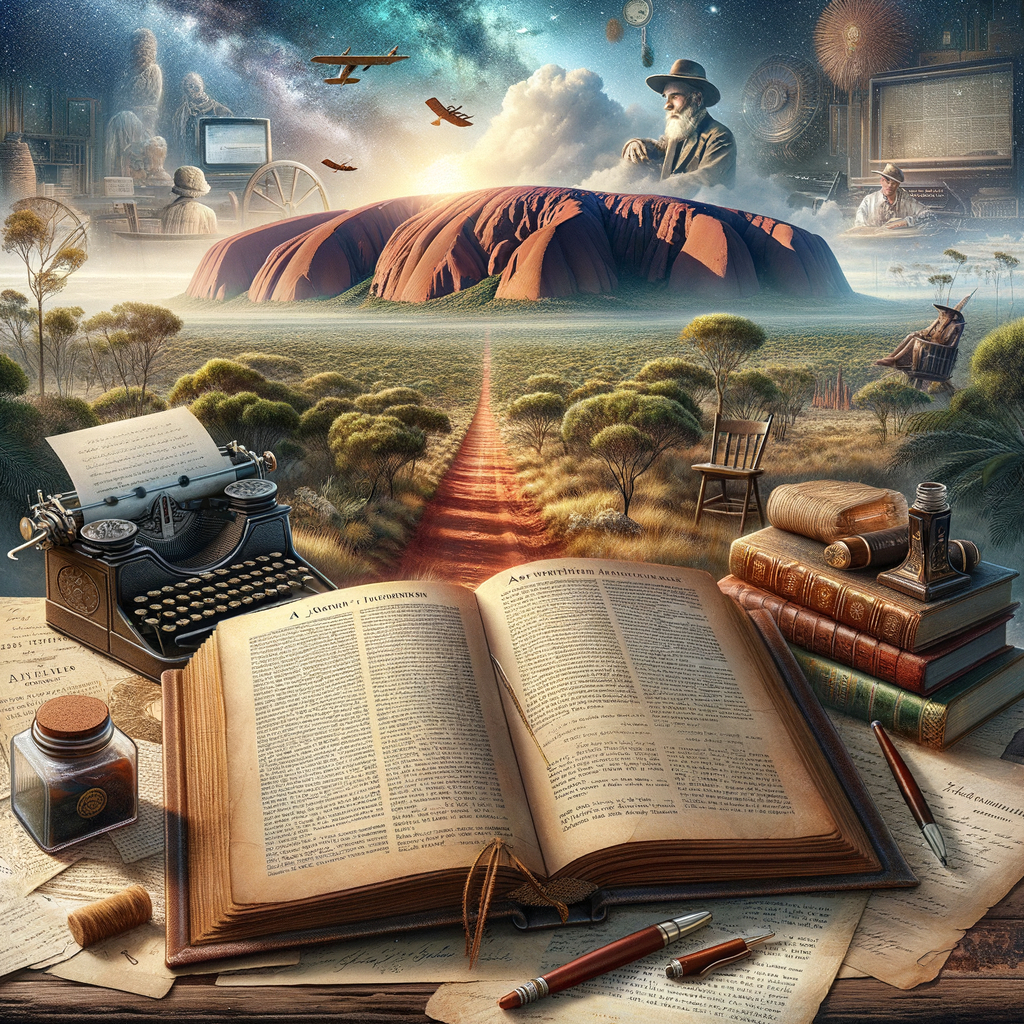Physical Address
304 North Cardinal St.
Dorchester Center, MA 02124
Physical Address
304 North Cardinal St.
Dorchester Center, MA 02124

From the early colonial narratives to contemporary Indigenous writings, Australian literature offers a rich tapestry of stories that reflect the country’s history, culture, and identity. This article takes you on a journey through the evolution of Australian literature, highlighting key periods, authors and works that have significantly shaped it.
Australian literature originated with the arrival of European settlers in the late 18th century. The earliest forms of writing were primarily journals, letters and reports documenting their experiences in this new land. These narratives often depicted Australia as an alien landscape filled with strange flora and fauna.
One notable work from this era is Watkin Tench’s ‘A Narrative of the Expedition to Botany Bay’ (1789), which provides a vivid account of the first fleet’s journey to Australia. Tench’s narrative not only documents historical events but also provides insights into colonial attitudes towards Indigenous Australians.
In the mid-19th century, Australian literature began to develop its unique voice through bush ballads. These poems celebrated rural life and depicted quintessential Australian characters like swagmen, shearers, and drovers.
Banjo Paterson’s ‘The Man From Snowy River’ (1890) is one such iconic bush ballad that captures the spirit of outback Australia. Similarly, Henry Lawson’s prose works like ‘The Drover’s Wife’ (1892) offered gritty realism about bush life.
The early 20th century saw a shift towards modernism in Australian literature. Writers started experimenting with form and style while exploring themes like urbanisation, gender roles and national identity.
Patrick White, a Nobel laureate, is one of the most prominent figures of this period. His novel ‘Voss’ (1957) is considered a masterpiece of Australian literature for its exploration of the Australian landscape and its psychological impact on people.
The post-war era in Australia brought forth a new wave of writers who grappled with the country’s changing socio-political landscape. They explored themes like immigration, multiculturalism, and Indigenous rights.
Thomas Keneally’s ‘The Chant of Jimmie Blacksmith’ (1972) is an influential work from this period that examines racial tensions in Australia through the story of an Aboriginal man.
The late 20th and early 21st century have seen a surge in diversity within Australian literature. Contemporary authors are exploring complex issues like climate change, asylum seekers, and LGBTQ+ rights.
A standout author from contemporary times is Tim Winton, whose evocative descriptions of Western Australia’s coastline have earned him international acclaim. His novel ‘Cloudstreet’ (1991) has become an iconic piece of Australian literature.
Indigenous voices have become increasingly prominent in recent decades. These authors provide crucial perspectives on Australia’s history and culture that challenge mainstream narratives.
Alexis Wright’s ‘Carpentaria’ (2006) is a remarkable example that weaves traditional storytelling with contemporary concerns to present an Indigenous view of Australia’s North.
Australian children’s literature also deserves mention for its contribution to shaping young minds. Authors like Mem Fox and Morris Gleitzman have created beloved characters and stories that resonate with children and adults alike.
From colonial narratives to contemporary Indigenous writings, Australian literature has evolved significantly over the centuries. It continues to offer a unique lens through which we can explore the nation’s history, identity, and diverse cultures. As we continue this literary journey, we anticipate more enriching, thought-provoking works that further deepen our understanding of Australia and its people.